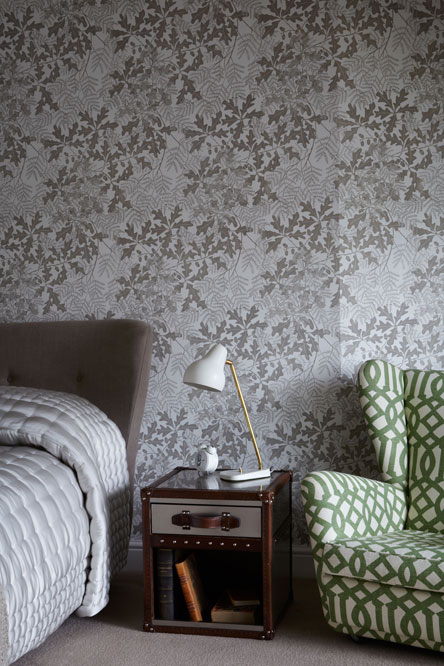Feast your eyes on this wallpaper. Lovely, isn't it? Somehow both fresh and old fashioned, it's a perfect choice for a little girl's room. Or, in another colorway, an equally good choice for a rather sophisticated bathroom.
If you thought this pattern was devised by a firm run by hip young things, you'd be mistaken. It's the work of this lady:
At 84, Marthe Armitage may not be young, but I daresay she's hip. The British designer started making patterns in the 1950s. Formally trained as a fine artist, she originally considered painting as a career. But as the mother to three young children, her work time was limited. She found that block printing was easier to accomplish with the few free hours she had.
Much of her work is nature themed, reminiscent of the flora and fauna encountered in her daily life. According to the Bible of British Taste, her first pattern, Angelica, was inspired by the foliage growing along the path where she walked her babies.
She cuts the patterns into linoleum blocks, and, in the early days, printed by hand on rolls of paper on the floor.
Though nowadays she prints using an old lithographic press, she still uses some of the blocks she created decades ago.
Commercial success came slowly. According to this recent profile in the New York Times Magazine, she didn't achieve fame til her mid 70s, when an article in World of Interiors brought her line with Hamilton Weston some well deserved attention.
Armitage still designs and draws the patterns by hand, and cuts the linoleum blocks, too. She and her daughter print everything in Armitage's London-based garage-turned-studio, where they mix all the inks themselves. She uses just six--white, black, yellow ocher, pale yellow, blueish red and vermilion--to create her line.
For more on her process, check out this video. I think you'll find her both personable and forthright.
Her papers grace all kinds of places: some swanky, others understated.
You'll also find them on camera. She created Alphabet for the Daniel Radcliffe film The Woman in Black.
They're especially gorgeous close up, as you can better appreciate the imperfections brought about by the hand printed process. Rather than seeing these seams and slight color variances as errors, I think they make the papers feel special, like works of art in their own right.
As the mother to two young children myself, time can feel like a precious commodity. So I love Armitage's work not just for its content, but the story behind it. What creativity can spring from the everyday, and what beauty can come from a few stolen hours! Color me both inspired and impressed.














